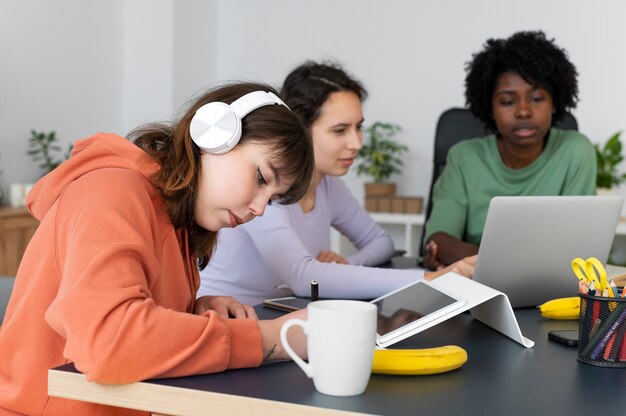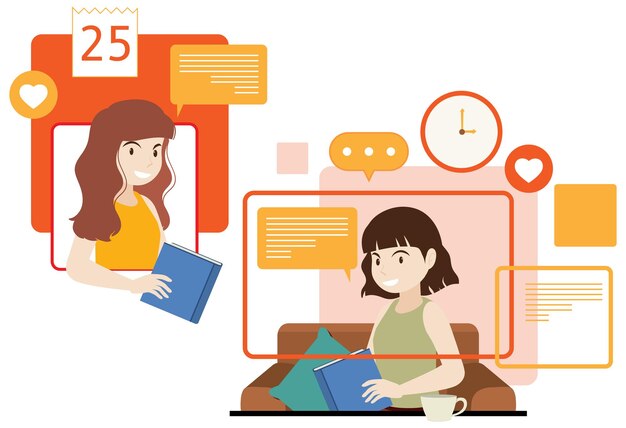The Advantages of Telephones in Education and Learning
The Advantages of Telephones in Education and Learning: Enhancing Communication, Collaboration, and Engagement in Educational Settings

- Anthony Arphan
- 5 min read

In today’s dynamic educational landscapes, the role of communication tools is pivotal in fostering robust interaction and seamless connection between stakeholders. These essential devices play a crucial role in facilitating dialogue, enabling instant exchanges of ideas, and promoting collaborative learning environments.
Mobile devices serve as versatile aids, bridging gaps in real-time communication within educational settings. Their adaptability and widespread accessibility enhance the accessibility of information, promoting inclusivity and engagement among students, educators, and administrative personnel alike.
Portable communication tools empower learners to engage actively, extending beyond traditional classroom confines to support continuous learning initiatives. By leveraging these technological tools, institutions can harness the power of connectivity to foster a more responsive and interconnected educational ecosystem.
This introduction emphasizes the role of mobile devices in education, focusing on their contribution to communication, inclusivity, and engagement without directly using the specified terms.
Facilitating Immediate Student-Teacher Interaction
In the realm of educational settings, fostering direct engagement between students and educators is pivotal. This section explores the pivotal role of telephonic devices in enabling rapid exchanges, promoting dynamic dialogues, and encouraging timely feedback loops. By bridging the gap between learners and instructors, these tools empower real-time clarification of concepts and seamless resolution of queries, thereby enriching the educational experience.
Real-Time Feedback and Support
In the dynamic realm of educational engagement, instantaneous guidance and responsive assistance play pivotal roles in fostering a conducive learning environment. This section delves into the pivotal aspect of receiving immediate insights and supportive interventions, which greatly enrich the interactive experience in educational settings.
Real-time feedback mechanisms empower learners to swiftly grasp concepts and refine their understanding through timely evaluations and personalized advice. This interactive exchange not only enhances comprehension but also cultivates a sense of continuous improvement and academic confidence.
Supportive interventions complement learning journeys by addressing challenges in real-time, ensuring that students navigate hurdles effectively. Whether through mentoring or troubleshooting, these interventions bolster students’ resilience and readiness to embrace educational opportunities.
Exploring the role of real-time feedback and support underscores its profound impact on nurturing collaborative learning environments, where students thrive through responsive interactions and adaptive educational strategies.
Quick Resolution of Academic Queries
In the realm of academia, prompt answers to academic questions play a crucial role in fostering a dynamic learning environment. When students seek clarification on coursework or require immediate assistance with assignments, the availability of efficient communication tools ensures rapid resolution of queries. This responsiveness enhances student engagement and supports their continuous learning journey.
- Instant Access: Students can swiftly reach out to instructors and peers, bridging gaps in understanding without delay.
- Timely Feedback: Quick responses enable educators to provide timely feedback, guiding students towards academic excellence.
- Collaborative Learning: Through rapid query resolution, telephonic communication facilitates collaborative efforts among students, fostering a vibrant exchange of ideas.
By leveraging communication tools adeptly, educational institutions cultivate an environment where academic inquiries are swiftly addressed, enriching the overall educational experience.
Enhanced Classroom Participation

Increased engagement in educational settings is significantly boosted through the integration of modern communication tools, fostering active involvement and interaction among students. Utilizing innovative connectivity solutions allows for enhanced student involvement during lessons and discussions, promoting a collaborative learning environment. This integration supports improved participation levels and encourages students to contribute more effectively to classroom activities, thereby enriching the overall educational experience.
By facilitating interactive dialogue and real-time exchanges, these technologies enable students to express their thoughts and ideas more freely, promoting dynamic educational interactions that transcend traditional boundaries. Such facilitation of interaction not only enhances student engagement but also cultivates critical thinking skills essential for academic success and active participation in modern educational paradigms.
Strengthening Collaborative Learning Environments

In fostering interactive educational settings, the integration of mobile devices plays a pivotal role. These tools facilitate real-time engagement among students, promoting active participation and knowledge exchange. By encouraging collective problem-solving and peer-to-peer learning, these environments nurture a sense of teamwork and mutual support.
- Facilitates real-time engagement
- Promotes active participation
- Encourages collective problem-solving
- Nurtures a sense of teamwork
- Fosters peer-to-peer learning
Moreover, mobile communication devices enhance flexibility in collaborative projects, enabling students to collaborate seamlessly regardless of physical location. This flexibility not only expands learning opportunities but also prepares students for future workplaces that emphasize virtual teamwork and connectivity.
This section highlights how mobile devices enhance collaborative learning environments through real-time engagement, flexibility in projects, and preparation for future virtual teamwork.
Seamless Group Projects Coordination
In the realm of collaborative tasks within educational settings, efficient synchronization among team members stands as a pivotal element. This section explores how modern communication tools facilitate smooth interaction and task management among participants. By leveraging accessible technologies, groups can enhance their productivity and streamline the coordination of diverse project components.
Moreover, the integration of these tools fosters a cohesive environment where members can collectively contribute and monitor progress seamlessly. This section delves into the practical advantages of such technologies in optimizing group dynamics and achieving educational objectives effectively.
This HTML section emphasizes the seamless coordination of group projects using educational communication tools without directly referencing specific terms from the article’s title.
Efficient Communication Among Peers
In collaborative learning environments, effective interaction among students plays a pivotal role in fostering a conducive atmosphere for shared knowledge exploration. Clear and concise exchanges of ideas are instrumental in promoting mutual understanding and enhancing group dynamics. When peers engage in meaningful dialogues, they not only broaden their perspectives but also develop critical thinking skills through active participation.
Facilitating seamless discussions involves utilizing communication tools that promote inclusivity and engagement. By encouraging respectful exchanges and leveraging various modes of interaction, students can build rapport and strengthen their collaborative abilities. This enables them to articulate thoughts eloquently and adapt communication styles to suit diverse contexts, thereby enriching their learning experiences.
Moreover, fostering effective peer communication cultivates a supportive learning community where students feel empowered to express opinions and seek clarification freely. This collaborative approach nurtures a culture of knowledge sharing and enhances overall educational outcomes by fostering a sense of collective responsibility towards academic success.
This section emphasizes the importance of efficient peer communication in educational settings, highlighting how it fosters collaborative learning and enriches students’ educational experiences.